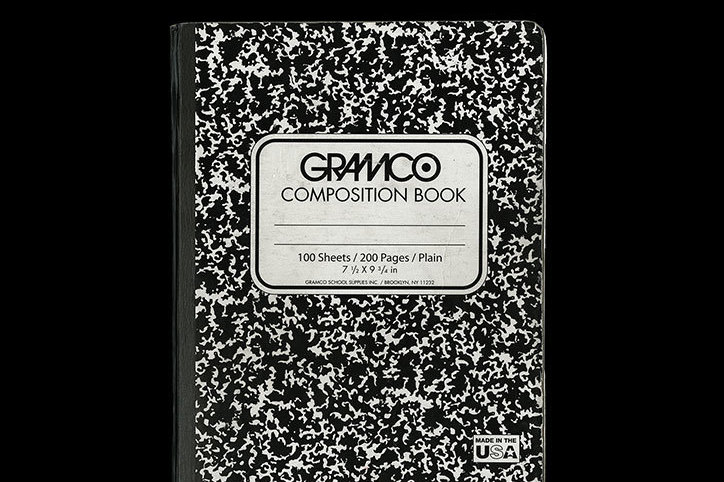As our computers constantly evolve with each update and upgrade, there’s something comforting about how paper notebooks don’t. In fact, a 200-year-old notebook isn’t that much different from a brand-new one.
With its classic black and white marbled cover, the composition book is the perfect example of timeless notebook design. They’re used in books and movies to signal that secrets, mysteries and revelations lie within the pages. It’s the rebellious teenage cousin of the Moleskine. They’re not meant for briefcases—they’re meant for the scribblings of artists like Jean-Michel Basquiat.
Pentagram, a London design studio, is also a fan. Partner Michael Beirut says he’s been using composition books since 1982. And Pentagram graphic designer Aron Fay is so obsessed with the bi-chromatic books that he decided to redesign them.
Named comp, Fay’s contemporary composition book reimagines the simple cover with a super minimal, 21st-century look. “These notebooks haven’t changed all that much since they came into being centuries ago,” Fay says of the composition book, adding, “They have a 180+ year history of being produced using the most economical manufacturing methods available.”
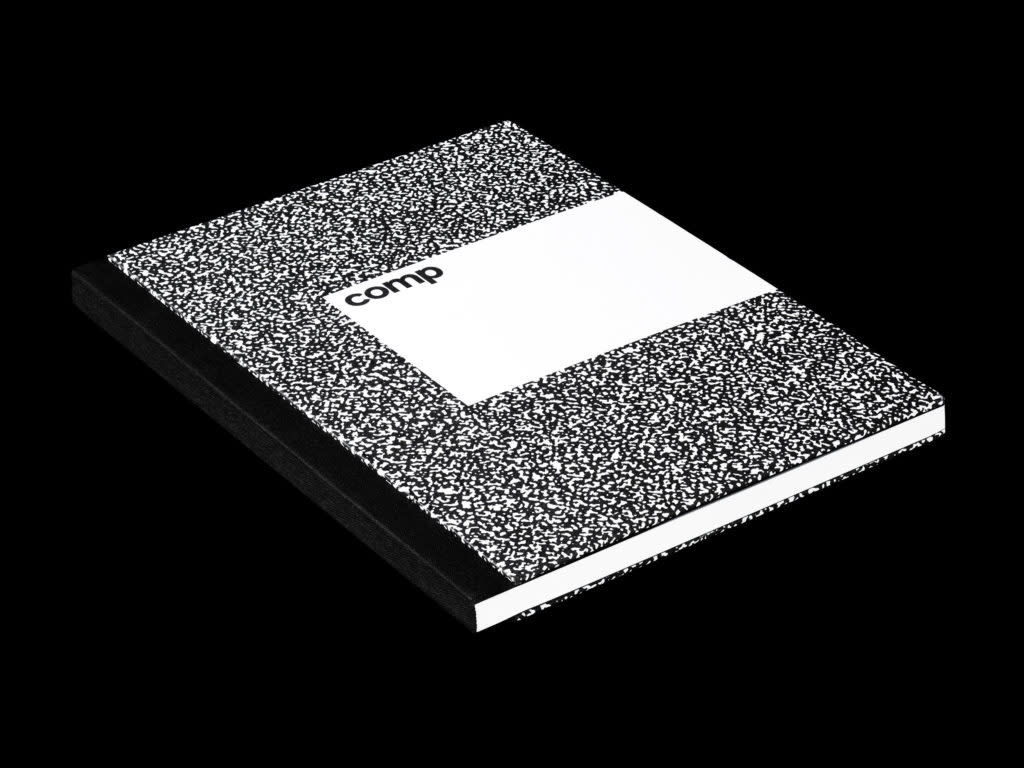
Image by Brian Kelley
On Fay’s Kickstarter page, he outlines a history of the composition book, showing just how long it’s been around and how surprisingly little the design has changed. Despite how widely available the composition book is, it’s strangely difficult to trace its origins. The books are especially popular in the United States, but where were they first created? And who designed that distinctive marble cover pattern?
The story of the composition book begins way before American companies began selling them to students. The composition book’s unique marbled pattern was inspired by printing techniques in 10th century China. Later, in 12th century Japan, early techniques of paper marbling continued to evolve to produce marbled designs. Here’s an example of Japanese paper marbling in a 12th century book of poems:
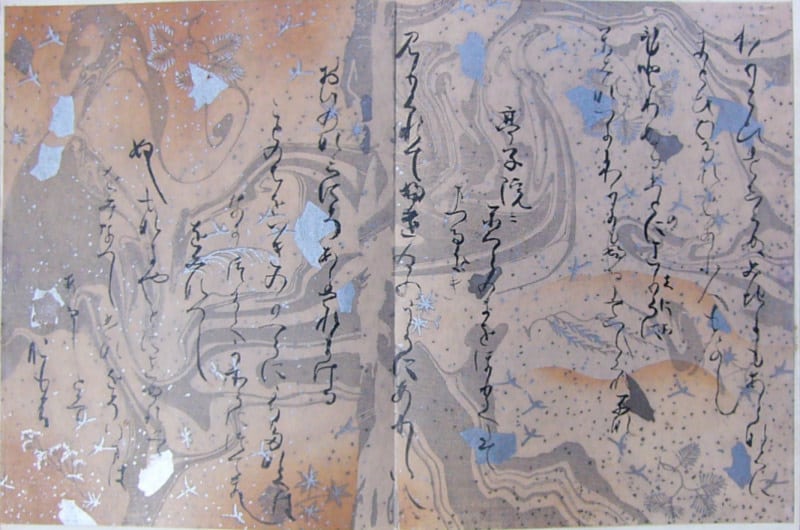
Later, in the 15th century, marbling made its way westwards. In Turkey, it was practiced in a slightly different style, and known as “ebru.” Most Europeans likely discovered paper marbling through this style, which they might have encountered in Istanbul. In the 19th century, marbling became widely popular, and was frequently used in England for decorating book covers, end papers, and even the edges of books.
Paper marbling is labor-intensive. Typically, it involves pigments being dropped into water and manipulated with brushes before a piece of paper is placed on top to absorb the resulting pattern. By the 1830s, cheaper and more cost-effective methods of creating marbled paper were devised, known as pseudo-marbling. For example, the agate pattern below, created in Germany, was produced through industrial methods rather than careful handwork. This is what inspired the original marbled composition books.
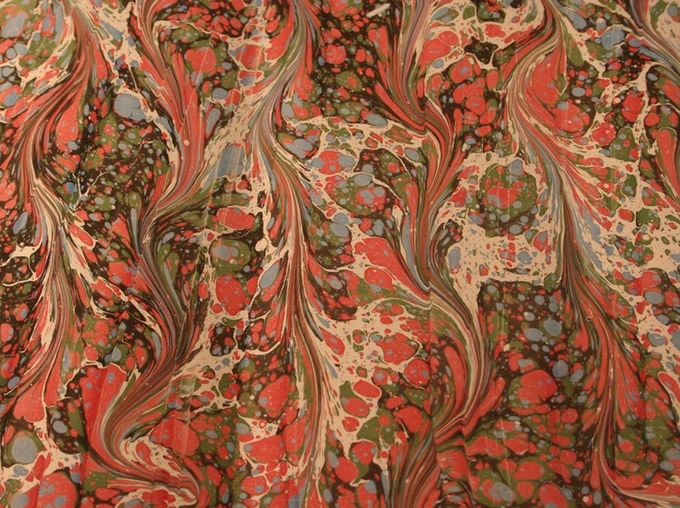
Turkish “ebru” marbling
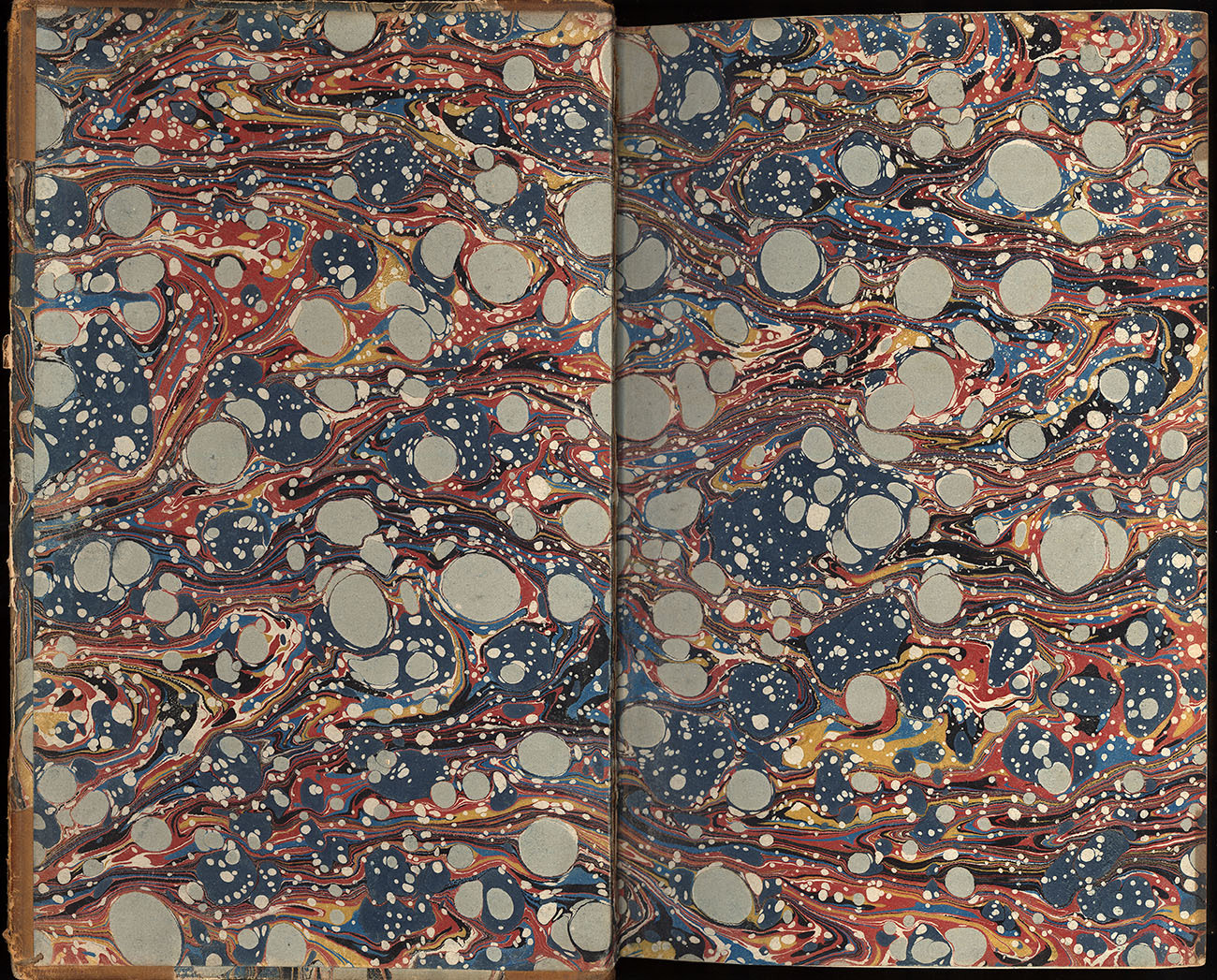
Marbled endpaper in an English book, circa around 1830
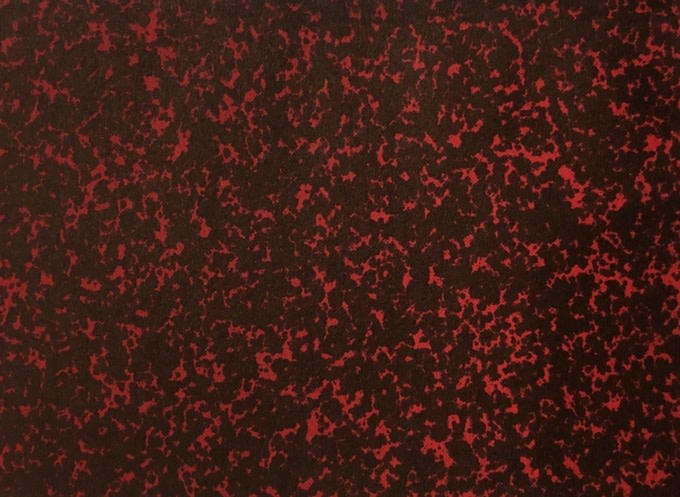
German pseudo-marbling
Notebooks printed with pseudo-marbling pattern began appearing in France and Germany in the mid-19th century, and by the early 20th century, U.S. manufacturers like Roaring Spring were emulating the design. Never copyrighted, it was picked up by Mead in the 1970s, and remains popular with many brands today.
Check out a history of composition book designs through the ages, from 1860s France to modern-day USA.
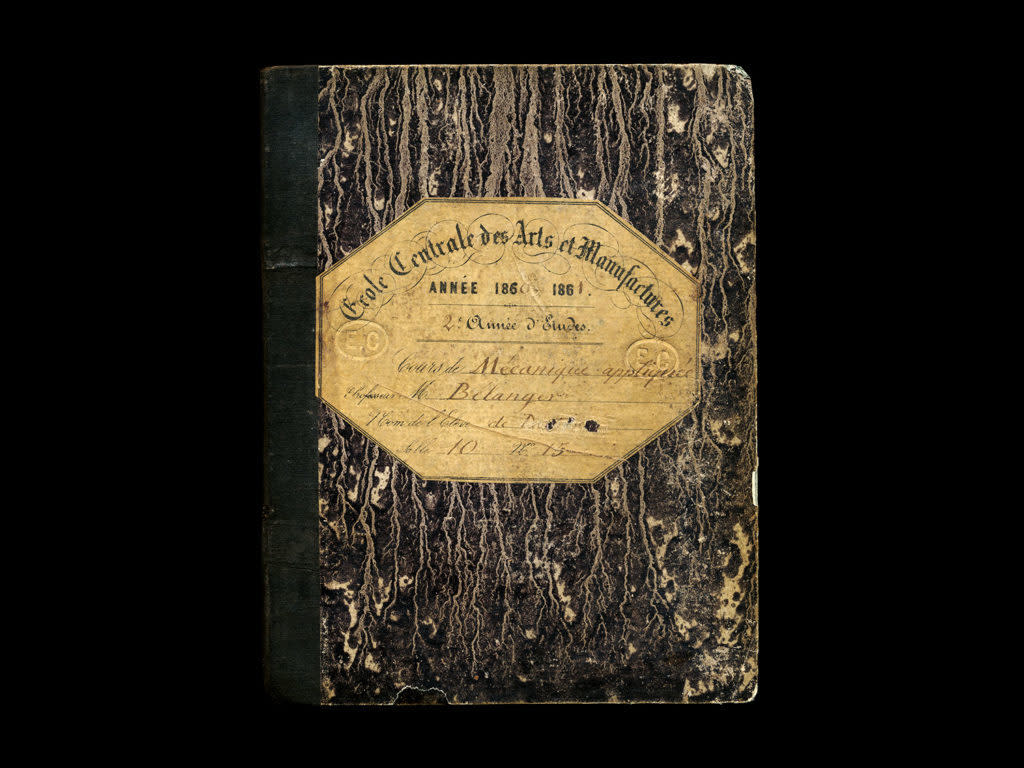
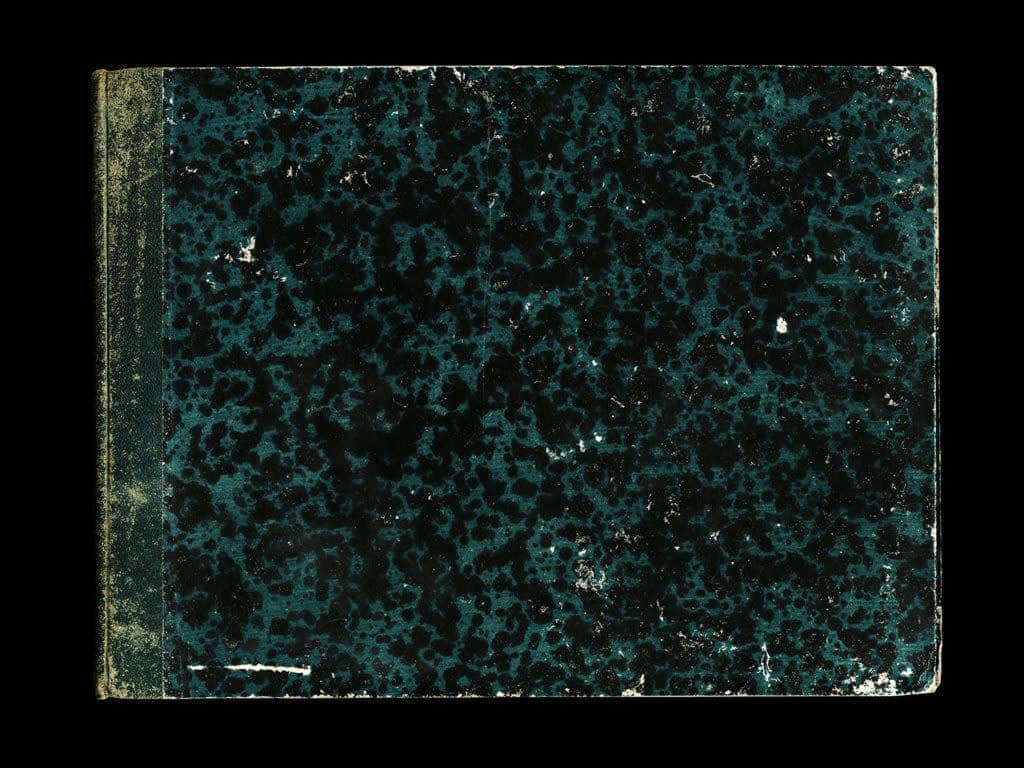
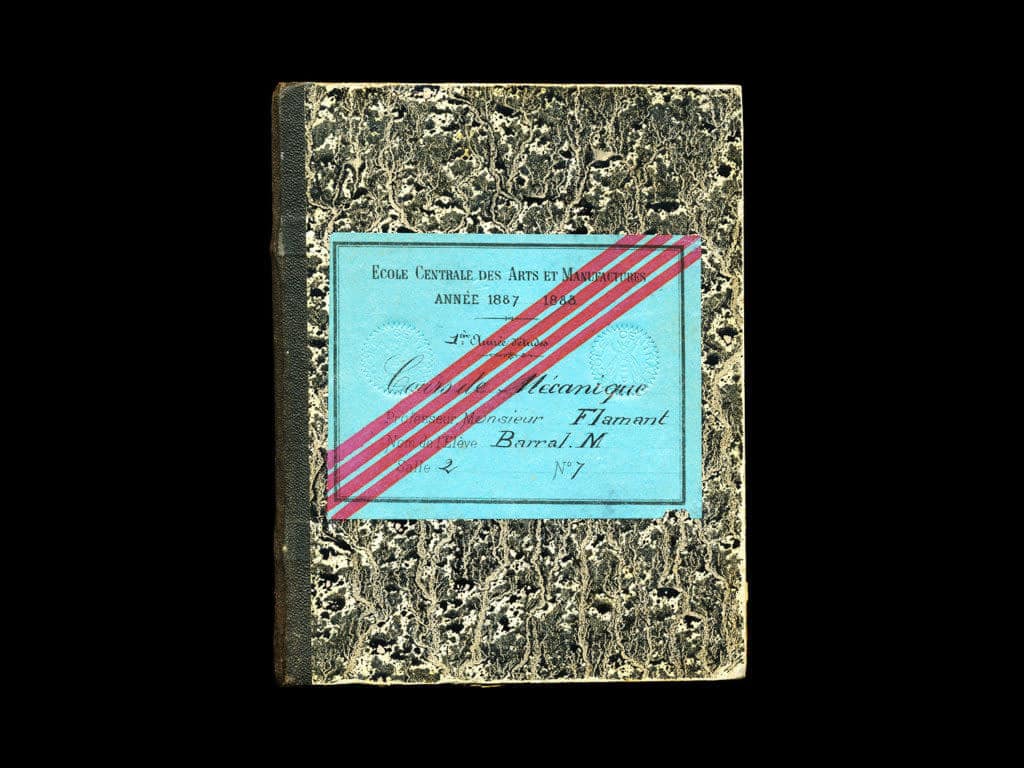
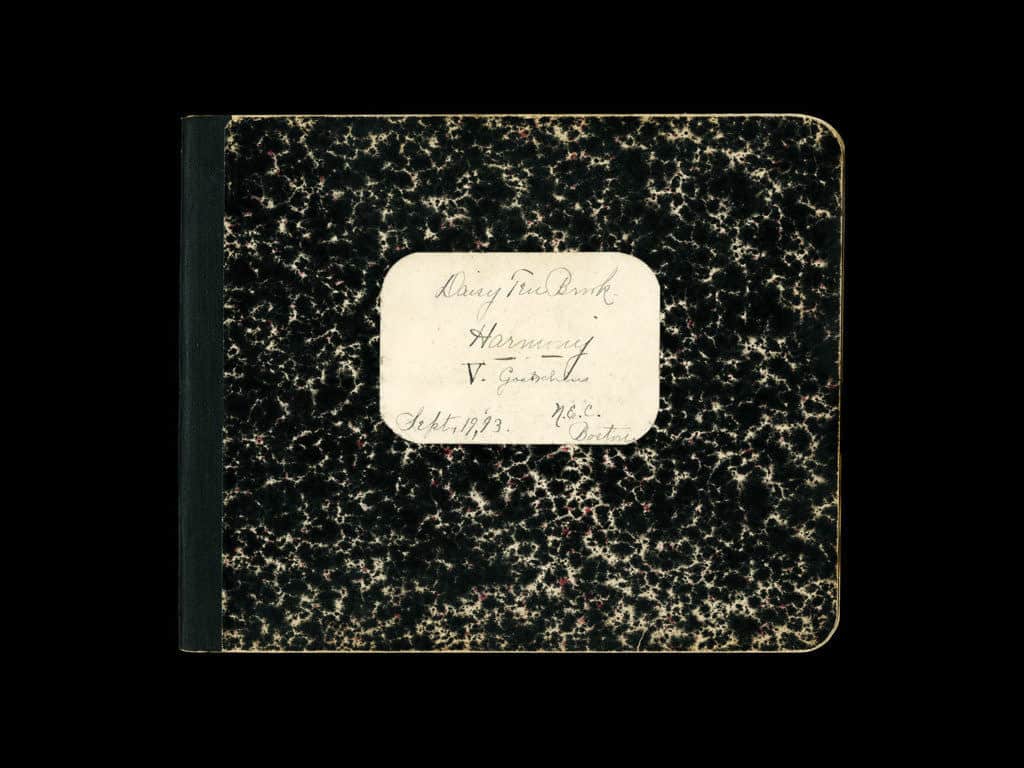
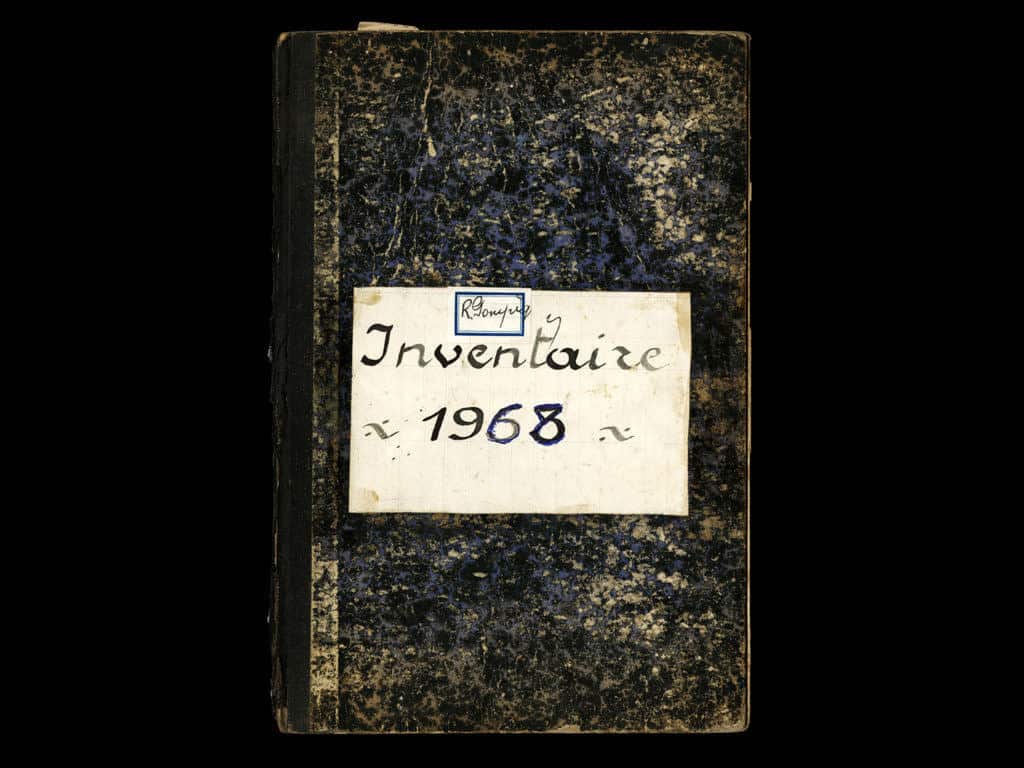
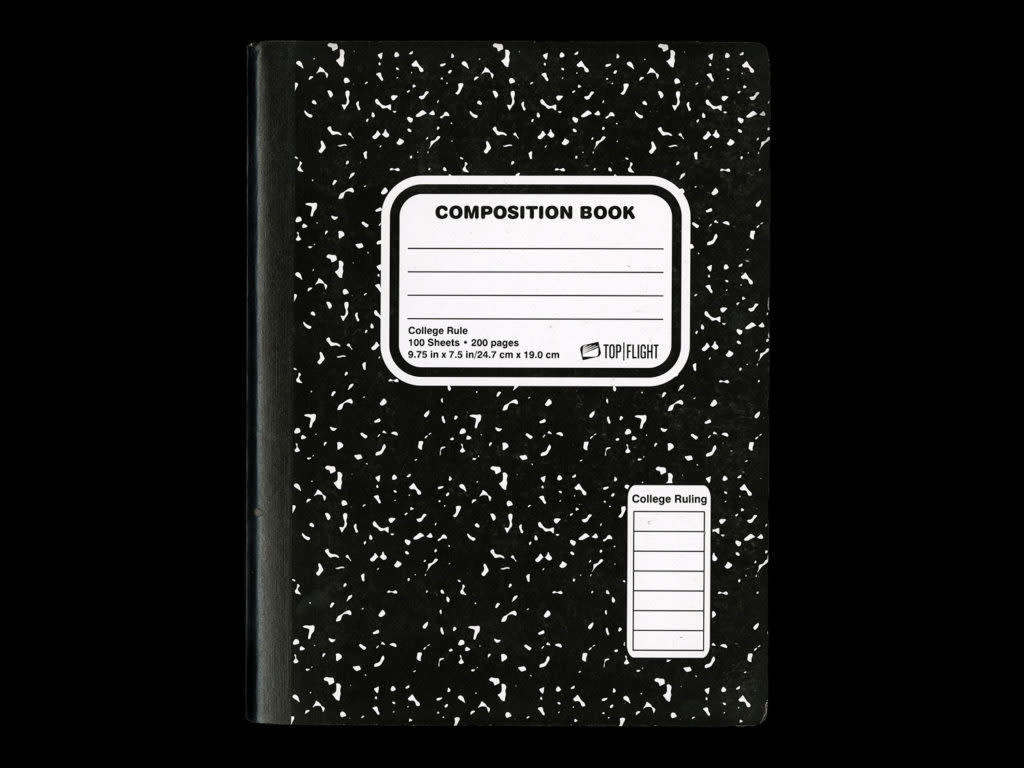
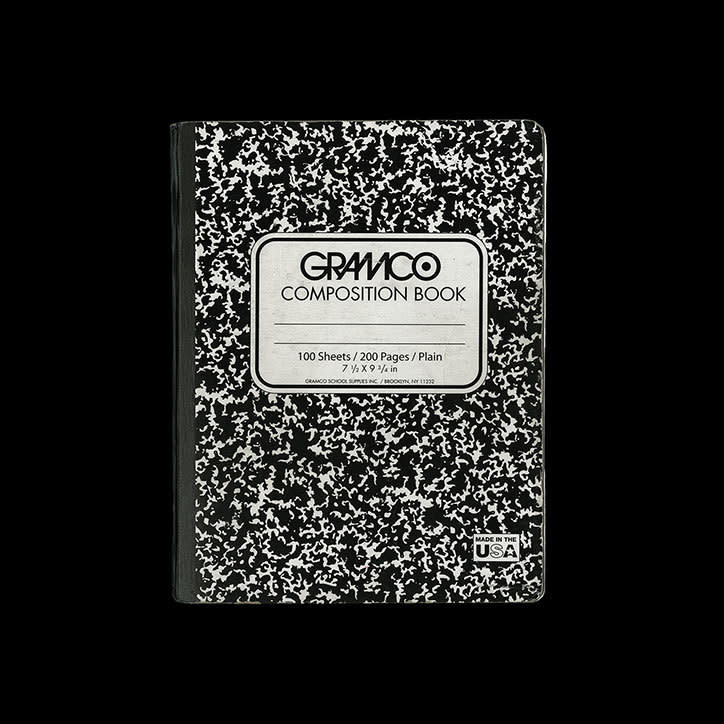
Images via comp.
